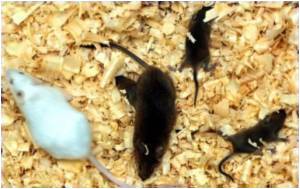Salamanders and newts have long tickled the interest of scientists for the ease with which tissue regeneration takes place ,in strict contrast to mammals.

In newts and salamanders, cells maintain their muscle identity, which prevents them from straying from the beaten path and becoming other, less useful cell types.
Stanford University School of Medicine researchers Helen Blau, Kostandin Pajcini and Jason Pomerantz, however, have accomplished this feat in lab mice by blocking the expression of just two tumour-suppressing proteins.
The team members were investigating whether myocytes, run-of-the mill muscle cells that normally don't divide, can be induced to re-enter the cell cycle and begin proliferating.
Pajcini and Pomerantz found that blocking the expression of tumour suppressors retinoblastoma, or Rb, and ARF allowed individual myocytes isolated from mouse muscle to dedifferentiate and begin dividing.
When they put the cells back into the mice, they were able to merge with existing muscle fibers - as long as Rb expression was restored.
Advertisement
Source-ANI









